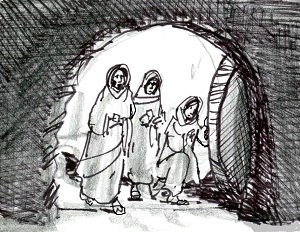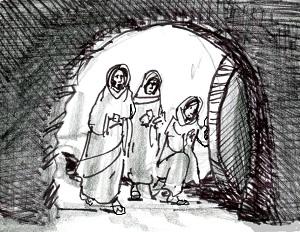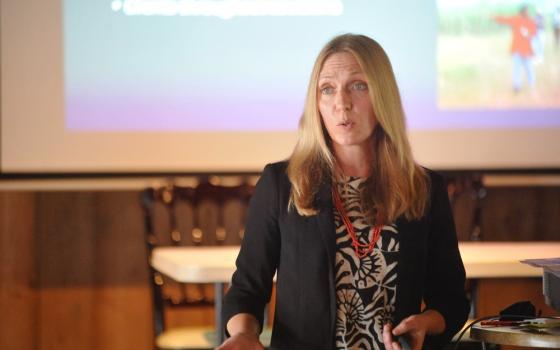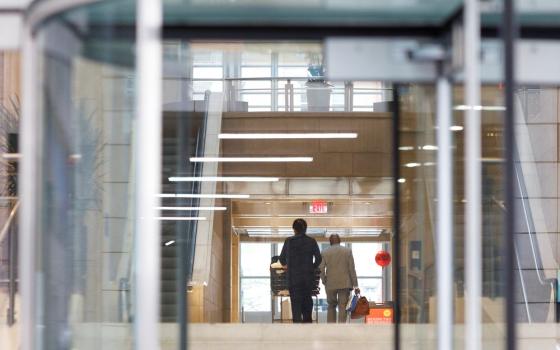

“Do not be afraid! I know that you are seeking Jesus the crucified. He is not here, for he has been raised just as he said. Come and see the place where he lay” (Matt 28:5-6).
Easter Vigil, Easter Sunday
Easter of 2020 will be remembered as one the most significant events of our generation. For believers, the Easter Vigil is the highpoint of our liturgy, called by Vatican II the "font and summit" of the life of the church, and it is also a cultural event for billions of people that coincides with the arrival of Spring.
This year it is also the apex of a pandemic that is reaping a harvest of death and suffering worldwide. Banished to our homes for fear of contagion, we are learning how essential community is to sustain our fragile social interdependence and shared religious faith.
The Easter Vigil is the traditional opportunity to welcome new members in Baptism, but it also serves as Christian formation for all of us. The newly kindled Paschal Candle rescues us from the night and warms us as we hear once again the familiar Bible readings that culminate in the Gospel proclamation of the resurrection.
There is hardly a need for a homily, and a short one is advised if the assembly has done its work of reviewing their faith from Genesis to Exodus, through the Prophets and from St. Paul. Halleluiah is proclaimed as powerful enough to push back fear and doubt in the face of death.
Yet, preachers still must prepare, and for those whose files do not include “Easter sermon during a pandemic,” fresh pondering is needed to affirm their understanding of the resurrection of Jesus, so that, as St. Peter writes, they are “prepared to give an answer to everyone who asks you to give the reason for the hope that you have” (1 Pet 3:15}.
Words are not enough, nor is some literal insistence on resuscitation of a corpse or a florid theology of symbolic or spiritual return in the hearts of the disciples. We need the truth. The Gospels themselves hide as well as reveal, remain mysterious as accounts layered in prophecy and promise, differing in details, both understated and exuberant, as though they hold a secret too immense for language, a mind-bending, heart-breaking truth that has to be experienced to be known. How do we do understand this?
Johann Baptist Metz, a German theologian who labored in the shadow of the Holocaust and on behalf of Liberation Theology for Latin America, insisted that to be credible our faith must address history rather than transcend it. He called the Kerygma, the mystery of the death and resurrection of Jesus, “a dangerous memory.” To remember the suffering and death of Jesus at the heart of the Eucharist (anamnesis), is to make the risen Christ present again as the inbreaking of God in history. To believe in the Risen Christ is to uncover the dangerous memory proclaimed by the Gospels here and now, in our own lives and in the demands of our time. Jesus confronts us with the challenge of bringing justice, compassion and community to a world that resists them.
Metz, who died last December, now knows the secret and is among the cloud of witnesses (Heb 12:1-5) who join our Easter Halleluiahs this year to urge us to live the implications of our faith. Oscar Romero, Franz Jägerstätter, Dorothy Day, Peter Maurin, Dorothy Stang, Dietrich Bonhoeffer, Martin Luther King Jr, Thomas Merton, Mohandas Gandhi, and countless, unnamed others who heard and lived the radical call of Jesus.
There is something thrilling about being asked, “Do you know what you are getting into?” This is the gift of Easter, that whoever we are and however long it has taken us to hear Jesus ask us to live more fully the mystery of our baptism, this is our kairos moment. Now is our chance.
The song asks, “Were you there when they crucified my Lord? Were you there when he rose up from the dead?” This year the question is, “Are you here?”
Advertisement





